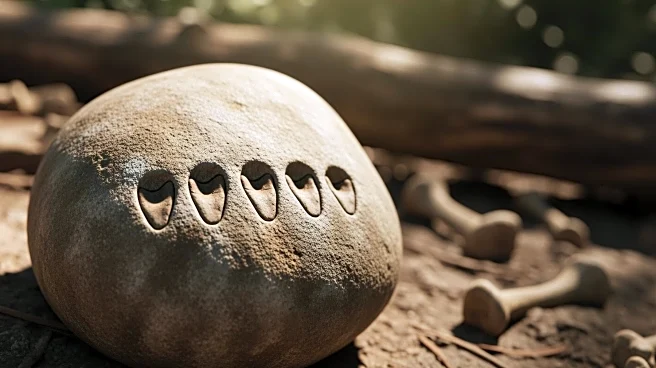What's Happening?
A study published in the American Journal of Biological Anthropology has challenged the belief that ancient humans practiced dental hygiene using toothpicks. Researchers analyzed over 500 fossil and modern primate specimens, finding that similar grooves
appear in the mouths of wild primates who have never used tools. This suggests that the grooves may not reflect intentional behavior but rather natural biomechanical forces.
Why It's Important?
This study prompts a reevaluation of how scientists interpret ancient human behavior, highlighting the need for caution in attributing cultural significance to anatomical features. It underscores the importance of comparative data in paleoanthropology and may influence future research on human evolution and behavior. The findings also contribute to understanding the natural development of dental pathologies in modern humans.













